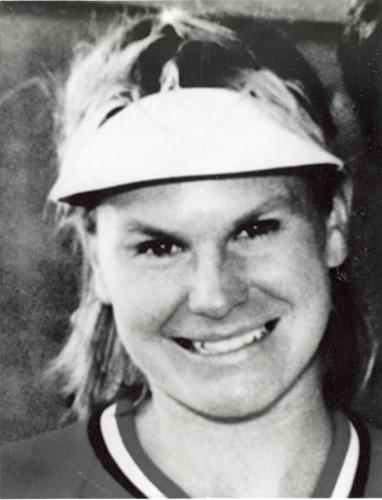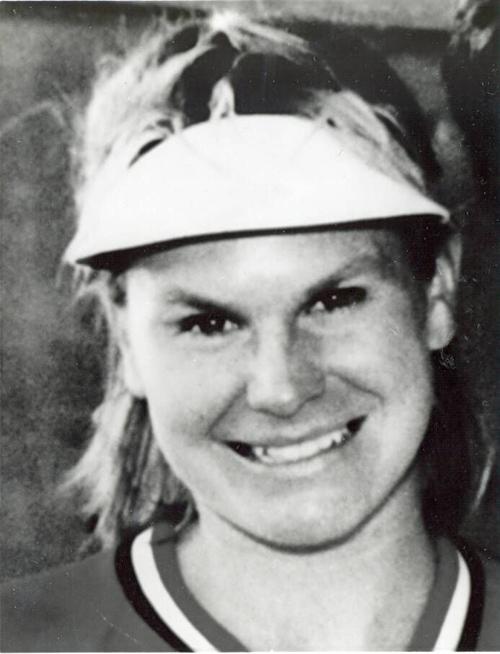Mike Candrea coached Arizona to its first Women’s College World Series championship in 1991. The game was, shall we say, a bit different than it is in 2022.
There were five home runs hit in the ’91 World Series. This year, national champion Oklahoma itself hit 16 home runs at the WCWS.
Attendance in the championship game, a stunning 5-1 Arizona victory over seemingly indestructible UCLA, was 1,881. The WCWS was two years removed from playing on a rec-league four-plex in Sunnyvale, California, a few miles from the San Francisco airport. This year, every evening session of the tournament drew more than 12,000 fans.
The ’91 championship game was televised — but not until 10 days later on ESPN at 10 a.m. on a Sunday. This year, every WCWS game was televised live by an ESPN channel.
Arizona’s team ERA in 1991 was 0.63, less than one run per game. This year, the UA’s team ERA was 3.19.
The UA played its 1991 home games on the PE field behind the Gittings Building on campus. Temporary bleachers seating about 300 were available. Now, the school’s $8 million Hillenbrand Stadium seats close to 3,000.
About the only thing that hasn’t changed from 1991 to 2022 is that winning the national championship carries the same weight.
Arizona was a significant underdog in 1991 at Oklahoma City. The Wildcats finished fourth in the Pac-10, a league that consisted of just six teams. Candrea’s club finished 11-9 in the conference but swept ASU 4-2 and 4-0 in a Tempe regional to qualify for the World Series. The Sun Devils finished second in the Pac-10 at 15-5.
When the Wildcats upset mighty UCLA in the finals, Bruins coach Sue Enquist came off as insulted more than disappointed or surprised. The Bruins had gone 163-19 the three previous seasons, all resulting in national titles.
“That’s a real slap in the face,” she said. “We’re all stunned.”

After that, losing to Arizona would become more routine than anything else. Candrea’s club went on to win national titles in 1993, 1994, 1996, 1997, 2001, 2006 and 2007. Underdogs? Hardly.
College softball in 1991 was a series of 1-0 and 2-1 games, completed in 75 minutes or so, with a so-called “dead ball” in use. (The NCAA introduced a livelier ball in 1993 and scoring multiplied).
To his credit, Candrea built his team around pitching, defense and timely hitting. The ’91 Wildcats hit just five home runs. This year the Wildcats hit 96.
One of the reasons Candrea became (at the time of his 2021 retirement) the winningest coach in NCAA softball history was that his eye for talent and his ability to develop the talent-on-hand was rarely matched. He was ahead of the game, both in strategy, scouting, the short-game and game-day adjustments.
He found the key players on his ’91 championship team in under-the-radar spots.
Star first baseman Julie Jones transferred from Yuma’s Arizona Western College. All-World Series outfielder Kristin Gauthier was also from Yuma. Right-fielder Stacy Redondo was from Cholla High School. Second baseman Marcie Aguilar, a transfer from Pima College, played high school ball at Pueblo. Jamie Heggen, a starting outfielder, was a transfer from Moorpark Junior College in SoCal.
Sophomore catcher Jody Miller, a rock of stability over four Arizona seasons, was recruited from Phoenix’s Moon Valley High School.

Arizona and coach Mike Candrea won the Wildcats' first Women's College World Series in 1991.
But Candrea’s biggest recruiting coup was pitcher Debby Day, who he discovered and correctly evaluated after two seasons at UT-Arlington. Day out-pitched future softball Hall of Famer Lisa Fernandez of UCLA at the World Series. In 1991, Day. 30-8, started 35 games and completed all 35.
She had significant backup help from freshman Susie Parra of Scottsdale’s Chaparral High School, 13-2 overall. Parra would become the No. 1 pitcher in college softball before leaving Arizona with two more national championship rings, in 1993 and 1994.
The margin for error at the 1991 WCWS was much smaller than it has been the last 30 years.
Said Candrea: “You had to wait for someone to make a mistake, to get a runner on base. That’s how you won.”
A few years later, Candrea was among the first to take advantage of the new elements of college softball: power and speed. But in 1991, it was all about pitching and reducing mistakes.
“When it got to crunch time,” he said, “we had what it takes.”








